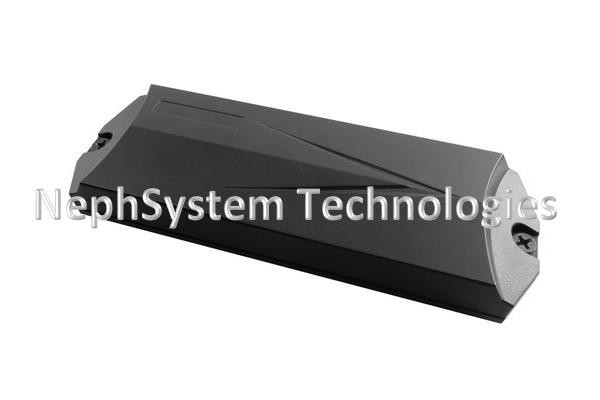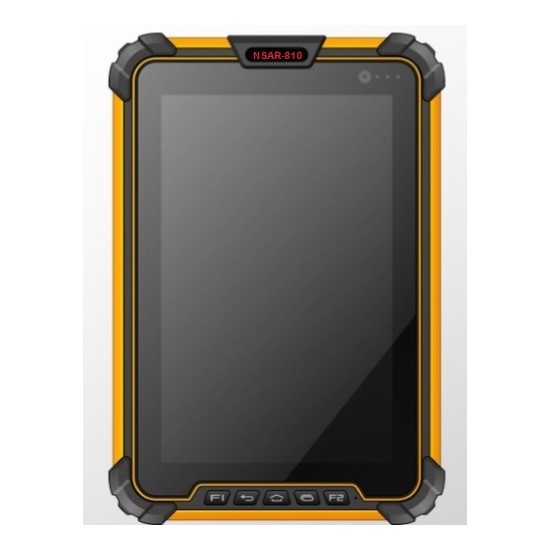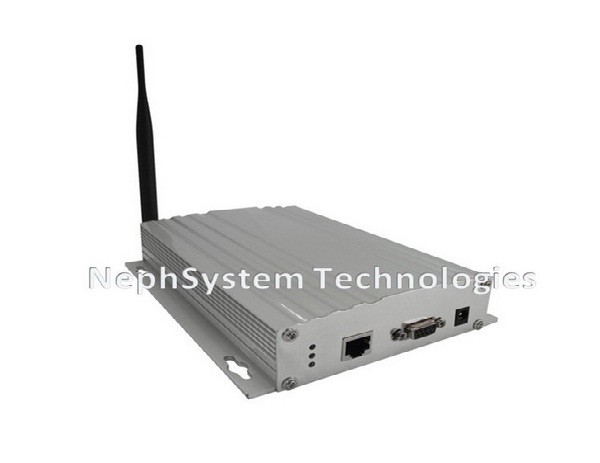Wondering how to track your assets over long distances efficiently? An active RFID reader might be the solution you need. These readers use battery-powered tags, enabling real-time tracking and long-range communication. In this article, we’ll explore what an active RFID reader is, how it works, and its major benefits and applications.
Active RFID readers utilize self-powered tags that enable long-distance communication up to 150 meters, making them ideal for expansive asset tracking.
These readers provide real-time tracking and monitoring capabilities, significantly enhancing asset management efficiency in various sectors, including supply chain and healthcare.
Active RFID technology is evolving with trends like integration with the Internet of Things (IoT) and enhanced security features to improve asset management and safeguard data.

Radio Frequency Identification (RFID) uses electromagnetic fields to identify and track uhf rfid tags and hf tags attached to objects. These tags store information electronically, readable by RFID readers. RFID systems function across different frequency bands: low-frequency (LF), hf rfid, hf rfid systems, and ultra-high frequency (UHF), each with unique benefits and constraints.
Active RFID readers use active tags with their own power source, usually a battery, unlike passive RFID tags that depend on the reader’s signal for power. This self-powering allows active tags to transmit signals over much greater distances, ideal for long-range tracking and monitoring.
The system’s frequency significantly influences its field communication increased range and performance.
An active RFID reader comprises several key components that work together to transmit and receive data. External antennas are crucial, sending interrogation signals to activate tags and receiving their responses. These antennas can be external or integrated into the reader, affecting the overall system performance and adaptability.
The reader’s transceivers facilitate communication with tags, significantly affecting read range and system flexibility. Battery life is vital for active RFID tags, determining their longevity and reliability in different conditions.
Active RFID readers transmit radio signals through their antennas to activate nearby tags. When an active RFID tag detects this signal, it uses its internal power source to send back a response containing its unique identification data. This interaction is similar to a conversation, with the reader asking a question and the tag responding.
Active RFID tags can autonomously transmit signals, allowing long distances communication, ideal for expansive tracking.

Active RFID readers offer numerous benefits, making them indispensable in various industries. With significant market growth expected due to technological advancements and diverse applications, these advantages are crucial for businesses.
A key benefit of active RFID readers is their long read range. Unlike passive systems requiring close proximity, active RFID tags can transmit signals up to 150 meters. This extended range is particularly useful for tracking assets in large areas such as warehouses, industrial sites, and transportation hubs.
Another advantage is real-time tracking. Active RFID readers continuously monitor assets’ location and status, ensuring critical items are accounted for. This real time monitoring visibility enhances asset management efficiency and reduces the risk of loss or misplacement.
Active RFID readers are also designed to perform reliably in harsh environments, suitable for extreme temperatures and high humidity.
Active RFID readers stand out for their impressive read range, transmitting signals up to 150 meters. Ideal for long-range tracking and monitoring, the built-in power source of active RFID tags ensures reliable communication over extended distances with long range rfid readers.
This feature significantly enhances the efficiency of asset tracking in large-scale operations, from logistics and supply chain management to industrial applications.
Real-time asset tracking is transformative for many industries. Active RFID readers enable continuous visibility and monitoring by using radio signals for seamless data exchange between the reader and the asset tags. When a tagged asset comes within range, it sends back identifiable information, allowing real-time updates on its location and status, including real time location tracking.
This capability is valuable in environments where timely asset access is critical, such as healthcare and logistics.
Active RFID readers are designed to perform reliably in challenging environments. Be it high humidity, extreme temperatures, or industrial settings with physical obstructions, these readers maintain consistent performance. Their robust design ensures reliable data transmission and asset tracking without interruption.
This durability is crucial for industries operating in harsh environmental conditions, like manufacturing and construction.

Active RFID readers have a wide range of applications across various industries. Their ability to provide long-range, real-time tracking makes them invaluable in sectors such as supply chain management, healthcare, and industrial operations. By ensuring accurate and efficient asset tracking, these readers enhance operational efficiency and reduce the risk of asset loss or misplacement.
In supply chain management, active RFID readers enable efficient managing inventory tracking and logistics, providing real-time data on asset locations. This is crucial for maintaining accurate stock levels and timely delivery of goods.
In healthcare, active RFID technology tracks medical equipment and monitors patient movement, ensuring critical assets are always available when needed, often with minimal human intervention.
In industrial settings, active RFID readers track pallets and other movable inventory, enhancing operational efficiency and asset utilization.
Active RFID technology enhances inventory accuracy and reduces discrepancies in supply chain management. Active RFID tags continuously broadcast signals, enabling real-time asset tracking and efficient logistics management.
Advanced features like temperature monitoring and condition alerts help manage sensitive goods’ logistics, ensuring optimal storage and transport conditions.
Tracking medical equipment is essential in healthcare to ensure necessary tools are available when needed. Active RFID readers provide real-time location data, allowing healthcare staff to quickly locate equipment. This improves operational efficiency, reducing search time and ensuring timely retrieval for procedures.
Active RFID readers enhance operational efficiency in manufacturing and industrial settings by enabling precise asset tracking and location management. They are especially useful for tracking pallets, including those storing raw materials and other movable inventory.
Recent advancements in tag, antenna, and reader design have improved active RFID performance in challenging manufacturing environments, ensuring reliable data transmission despite temperature, humidity, and physical obstructions.

Understanding the differences between active and passive RFID readers is crucial for selecting the right system. Both systems have merits but cater to different applications and environments. Active RFID tags have a built-in power source, enabling long-distance signal transmission and real-time tracking. In contrast, passive RFID tags rely on the reader’s signal for power, limiting their range and requiring closer proximity for data transmission. Additionally, passive tags are often used in scenarios where cost efficiency is essential.
Choosing an RFID reader involves considering factors like cost, lifespan, data transmission capabilities, and power source. Active RFID tags are generally more expensive but offer longer read ranges and continuous signal transmission. Passive RFID tags are more cost-effective and suitable for applications not requiring long-range tracking.
Active RFID tags are significantly more expensive, ranging from $5 to $20 per tag. In contrast, passive RFID tags are much cheaper at around $0.08 per tag, making them a cost-effective choice for many businesses.
However, active RFID tags typically last three to five years, offering long-term reliability and reducing the need for frequent replacements.
Active RFID tags have the following characteristics:
Use frequencies that enable effective long-distance signal transmission, often up to 150 meters.
Rely on an internal power source, typically a battery.
Allow continuous signal transmission and real-time data updates.
In contrast, passive RFID tags depend on the reader’s signal for power, limiting their range and data transmission capabilities. This fundamental difference in power supply and data transmission is crucial when selecting an RFID system.
Setting up an active RFID system involves several steps:
Selecting the reader, considering factors like range, environment, and specific application requirements
Ensuring proper installation
Performing ongoing maintenance
Proper installation maximizes signal strength and ensures accurate data transmission, leading to faster data transfer rates. Regular maintenance ensures system longevity and optimal performance.
When selecting an active RFID reader, consider its expected use and operating conditions. Choosing the appropriate reader is crucial for optimizing asset tracking and management, significantly impacting operational efficiency.
Evaluate factors like read range, signal strength, durability, and reading range to ensure the selected reader meets your application’s specific needs.
Properly mounting RFID readers and antennas maximizes signal strength and accuracy. Adjustable mounting hardware helps align readers for optimal tag detection. Mounting RFID readers at heights that facilitate optimal signal reception and coverage is also important.
Proper installation is vital for maximizing the performance of active RFID readers.
Regular maintenance of active RFID readers ensures optimal performance and longevity. Key maintenance activities include:
Periodic physical inspections to check for damage to antennas and connections
Routine cleaning to enhance performance and signal clarity
Monitoring environmental factors like interference from physical obstructions to maintain system reliability
Having a troubleshooting guide for common issues ensures smooth system operation.
The RFID market is expected to grow exponentially in the coming years, driven by technological advancements and increased adoption across various industries. One significant trend is integrating active RFID technology with the Internet of Things (IoT), enhancing asset management and monitoring capabilities.
Another key trend is developing enhanced security features to safeguard data and ensure secure access control.
Active RFID technology is becoming a crucial element in IoT ecosystems, enhancing asset management and monitoring. By enabling automatic data collection and real-time tracking, active RFID systems optimize operational efficiency and provide valuable insights into asset utilization.
Seamless integration of RFID technology with IoT applications improves automation and data sharing, making it indispensable for modern businesses.
Emerging security solutions for active RFID include integrating encryption and authentication protocols to safeguard data against unauthorized access. Regularly updating the firmware and software of active RFID readers enhances functionality and security, addressing vulnerabilities and improving data management.
Future developments will implement advanced encryption measures, like quantum encryption, to bolster data security. These enhancements ensure valuable assets remain protected and access control is maintained.
Active RFID technology represents a significant advancement in the field of asset tracking and management. With its long read range, real-time tracking capabilities, and robust performance in harsh environments, active RFID readers offer numerous benefits across various industries. The applications of active RFID readers are vast, from supply chain management and healthcare facilities to industrial operations, enhancing operational efficiency and asset utilization.
As the RFID market continues to grow and evolve, staying informed about the latest trends and advancements is essential. The integration of active RFID technology with IoT ecosystems and the development of enhanced security features are set to revolutionize the way businesses manage and protect their assets. By understanding the intricacies of active RFID readers and implementing best practices for their setup and maintenance, businesses can unlock the full potential of this powerful technology.
Active RFID tags typically cost between $20 and $50 each, varying based on their specific features and capabilities.
The main difference between active and passive RFID tags lies in their power sources and signal range; active tags possess a built-in power source, enabling long-distance transmission, whereas passive tags depend on the reader's signal for power and have a shorter range.
Active RFID readers enable real-time tracking by continuously monitoring asset locations and statuses through constant radio signal exchange with the tags. This allows for seamless and immediate updates on asset movements.
The key components of an active RFID reader are antennas, transceivers, and a power source, typically a battery, for the tags. These elements work together to facilitate communication and data exchange in RFID systems.
When selecting an active RFID reader, it is essential to evaluate the expected use case, environmental conditions, read range, signal strength, and overall durability to ensure optimal performance. These factors will help you make a well-informed decision.